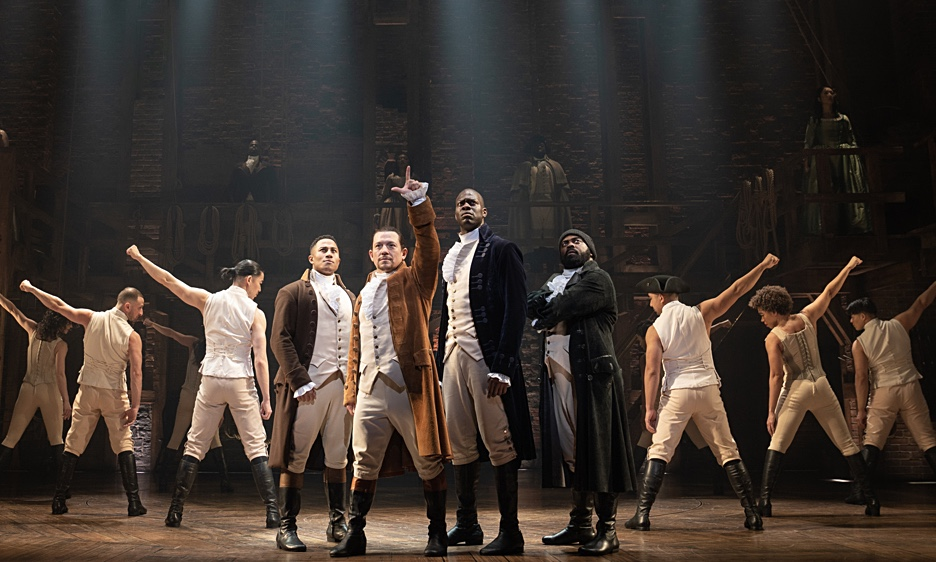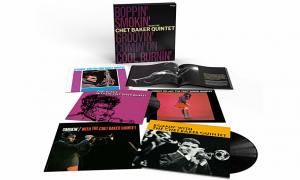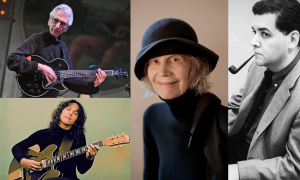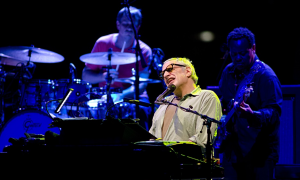Home » Jazz Articles » Highly Opinionated » Give Your Regards to Broadway—and Hollywood
Give Your Regards to Broadway—and Hollywood

This downward plunge has been blamed on everything from Elvis Presley and the coming of rock 'n roll in the 1950s, to The Beatles and the other advancing troops of what came to be known as "The British Invasion" in the 1960s, to the federal "cabaret tax" imposed during World War II that forced nightclubs to ban dancing in order to avoid the levy, turning jazz from a music that got people out of their seats and onto their feet into an introspective art form. Whatever the cause, extinct species don't come back to life except in science fiction, so one is compelled to ask, à la Vladimir Lenin, what is to be done? Other sectors of the economy follow the principle that the customer is always right, so one possible road to recovery for jazz musicians to follow is to interpret music that is already popular, rather than limiting themselves to self-penned compositions.
Back in the fifties and sixties many jazz musicians kept the cash flowing by recording albums of songs from Broadway musicals. Shelly Manne and Oscar Peterson recorded material from Lerner and Loewe's My Fair Lady. Peterson and Ray Brown teamed up on songs from Fiorello, a tribute to the New York's mayor La Guardia. Miles Davis did an album of songs from Porgy and Bess, as did Louis Armstrong and Ella Fitzgerald. There have been many jazz interpretations of West Side Story, including those by Peterson and Manne, among others. Trumpeter Kenny Dorham led an all-star group that included Jimmy Heath on tenor sax, Kenny Drew on piano, Jimmy Garrison on bass and Art Taylor on drums through a selection of songs from the Jerome Kern-Oscar Hammerstein musical Show Boat that includes "Can't Help Lovin' Dat Man" and "Ol' Man River," both of which became jazz standards. Pal Joey, Gigi, even the long-forgotten Li'l Abner all got the jazz album treatment.
Broadway shows don't have the hold on the American popular imagination that they once did, in large part because the Great White Way has been supplanted by Hollywood films, but the latter also are a fecund source of music that is both saleable and interesting. Few remember the 1947 movie Green Dolphin Street, much less the novel it is based on, but many have heard the theme song by Bronislaw Kaper played by jazz musicians ranging from Miles Davis to Ahmad Jamal to Bill Evans to Erroll Garner to Sonny Rollins. With that many prospectors you would think that this particular vein of ore would be mined out, but the melody and chord changes remain fresh three-quarters of century later.
Hollywood attracts highly-talented songwriters the way Tin Pan Alley used to because that is—in the Willie Sutton formulation—where the money is. A favorite Roy Hargrove CD of mine is one he made early in his career as a member of The Jazz Networks, a side project to his solo career. On "Beauty and the Beast" Hargrove and Antonio Hart (alto) are joined by three lesser-known Japanese musicians on selections from Disney movies that include the one in the title, "Pinocchio" ("When You Wish Upon a Star"), "Snow White and the Seven Dwarfs" ("Someday My Prince Will Come"), and "Mary Poppins," ("Chim Chim Cheree"), which was also given a workout by none other than John Coltrane.
It was once a standard criticism of a failed Broadway show that "the audience walked out humming the scenery." By this was meant that the music was less impressive than the spectacle, and ticket buyers were given no reason to recall the theatrical experience in the idle moments when they might be inspired to whistle a tune. Not every talented jazz musician is equally gifted as a composer, and there are some great songs produced for the middle-brow products of Broadway and Hollywood that are a loose ball on an open field for jazz musicians to pick up and run with.
Tags
Con Chapman
Shelly Manne
oscar peterson
Ray Brown
Miles Davis
Louis Armstrong
Ella Fitzgerald
Kenny Dorham
Jimmy Heath
Jimmy Garrison
Art Taylor
Ahmad Jamal
Bill Evans
Erroll Garner
Sonny Rollins
Roy Hargrove
Antonio Hart
Highly Opinionated
John Coltrane
PREVIOUS / NEXT
Support All About Jazz
 All About Jazz has been a pillar of jazz since 1995, championing it as an art form and, more importantly, supporting the musicians who make it. Our enduring commitment has made "AAJ" one of the most culturally important websites of its kind, read by hundreds of thousands of fans, musicians and industry figures every month.
All About Jazz has been a pillar of jazz since 1995, championing it as an art form and, more importantly, supporting the musicians who make it. Our enduring commitment has made "AAJ" one of the most culturally important websites of its kind, read by hundreds of thousands of fans, musicians and industry figures every month.





















